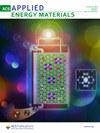利用机器学习算法开发多孔吸附材料的二氧化碳吸附模型
IF 5.4
3区 材料科学
Q2 CHEMISTRY, PHYSICAL
引用次数: 0
摘要
多孔吸附剂具有高孔隙率和大比表面积等共同特点。这些特性归因于材料的内部结构,对其吸附性能有很大影响。在这项研究中,我们创建了一个数据集,并从 21 篇已发表的论文中收集了多孔吸附剂(2789 个)的数据点,包括碳基、多孔聚合物、金属有机框架(MOFs)和沸石,以了解它们吸附二氧化碳的特性。应用了不同的机器学习(ML)算法,如 NN、MLP-GWO、XGBoost、RF、DT 和 SVM,以显示作为特性和吸附等温线参数函数的二氧化碳吸附性能。XGBoost 因其最高的准确度(R2 = 0.9980;MSE = 0.0001)而被选为最佳多项式算法。预测结果表明,吸附压力参数在所有上述多孔吸附剂中都是最有效的。在材料类型方面,碳基材料需要较高的压力才能更有效地吸附二氧化碳,而 MOFs 则在较低压力条件下表现出较高的吸附二氧化碳的潜力。研究还发现,碳基吸附剂、沸石和孔径较小的多孔聚合物具有较高的二氧化碳吸附能力。相比之下,MOFs 的吸附性能与孔径大小的关系并不一致。此外,在所有吸附剂中,孔径小于 1 nm 对更多二氧化碳吸附的影响都很明显。本文章由计算机程序翻译,如有差异,请以英文原文为准。

Development of the CO2 Adsorption Model on Porous Adsorbent Materials Using Machine Learning Algorithms
Porous adsorbents have common characteristics, such as high porosity and a large specific surface area. These characteristics, attributed to the internal structure of the material, significantly affect their adsorption performance. In this research study, we created a data set and collected data points from porous adsorbents (2789) from 21 published papers, including carbon-based, porous polymers, metal–organic frameworks (MOFs), and zeolites, to understand their characteristics for CO2 adsorption. Different machine learning (ML) algorithms, such as NN, MLP-GWO, XGBoost, RF, DT, and SVM, have been applied to display the CO2 adsorption performance as a function of characteristics and adsorption isotherm parameters. XGBoost was selected as the best ML algorithm due to its highest accuracy (R2 = 0.9980; MSE = 0.0001). The predicted results revealed that the adsorption pressure parameter is the most effective in all of the mentioned porous adsorbents. With regard to materials type, while carbon-based materials require higher pressures for a more effective CO2 adsorption, MOFs exhibit a higher potential for adsorbing CO2 under lower pressure conditions. The study also revealed that carbon-based adsorbents, zeolites, and porous polymers with smaller pore diameters demonstrate a high level of CO2 uptake. In contrast, the adsorption performance of MOFs does not show a consistent trend with respect to pore sizes. Also, in all adsorbents, the effect of a pore size smaller than 1 nm on more CO2 adsorption was evident.
求助全文
通过发布文献求助,成功后即可免费获取论文全文。
去求助
来源期刊

ACS Applied Energy Materials
Materials Science-Materials Chemistry
CiteScore
10.30
自引率
6.20%
发文量
1368
期刊介绍:
ACS Applied Energy Materials is an interdisciplinary journal publishing original research covering all aspects of materials, engineering, chemistry, physics and biology relevant to energy conversion and storage. The journal is devoted to reports of new and original experimental and theoretical research of an applied nature that integrate knowledge in the areas of materials, engineering, physics, bioscience, and chemistry into important energy applications.
 求助内容:
求助内容: 应助结果提醒方式:
应助结果提醒方式:


